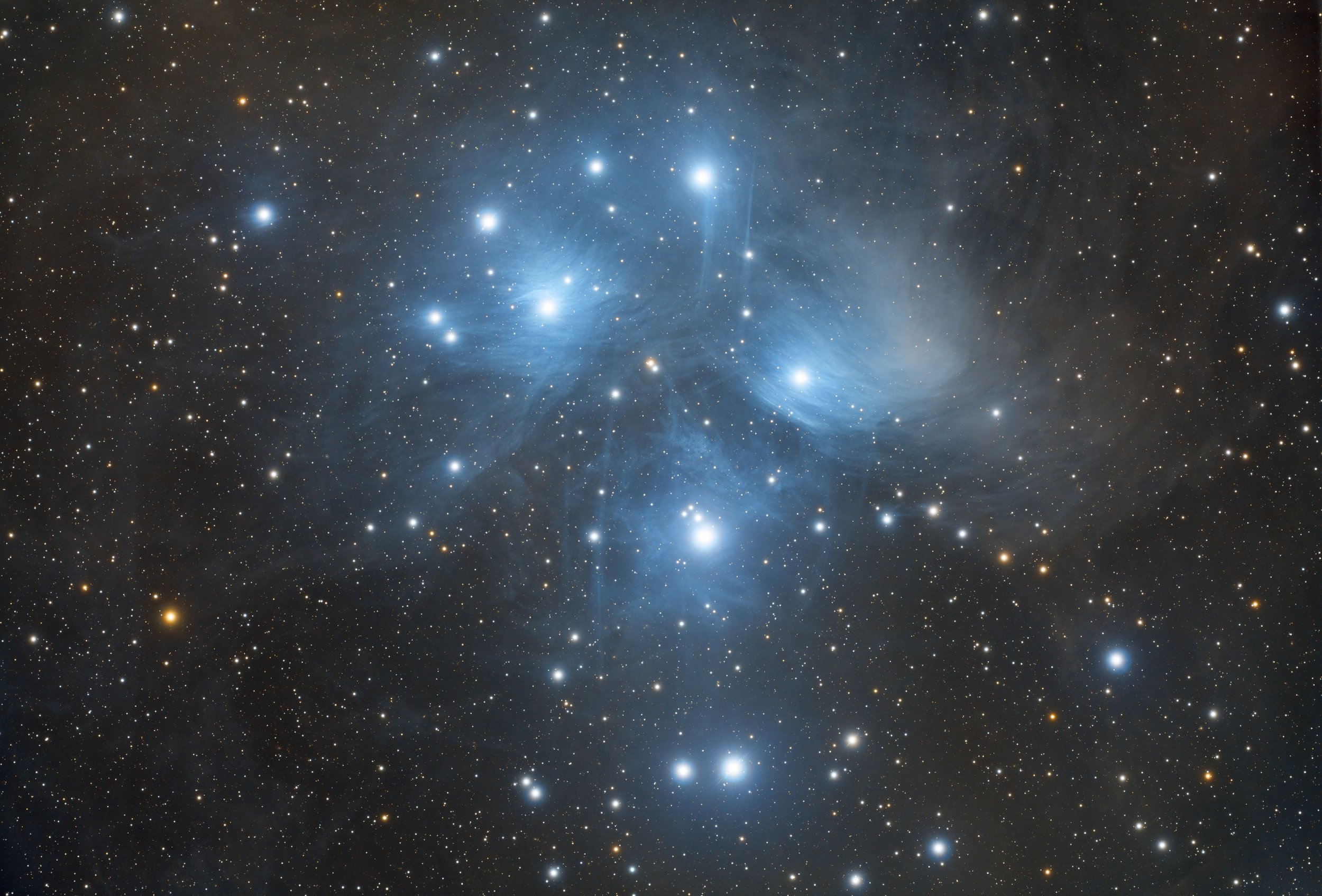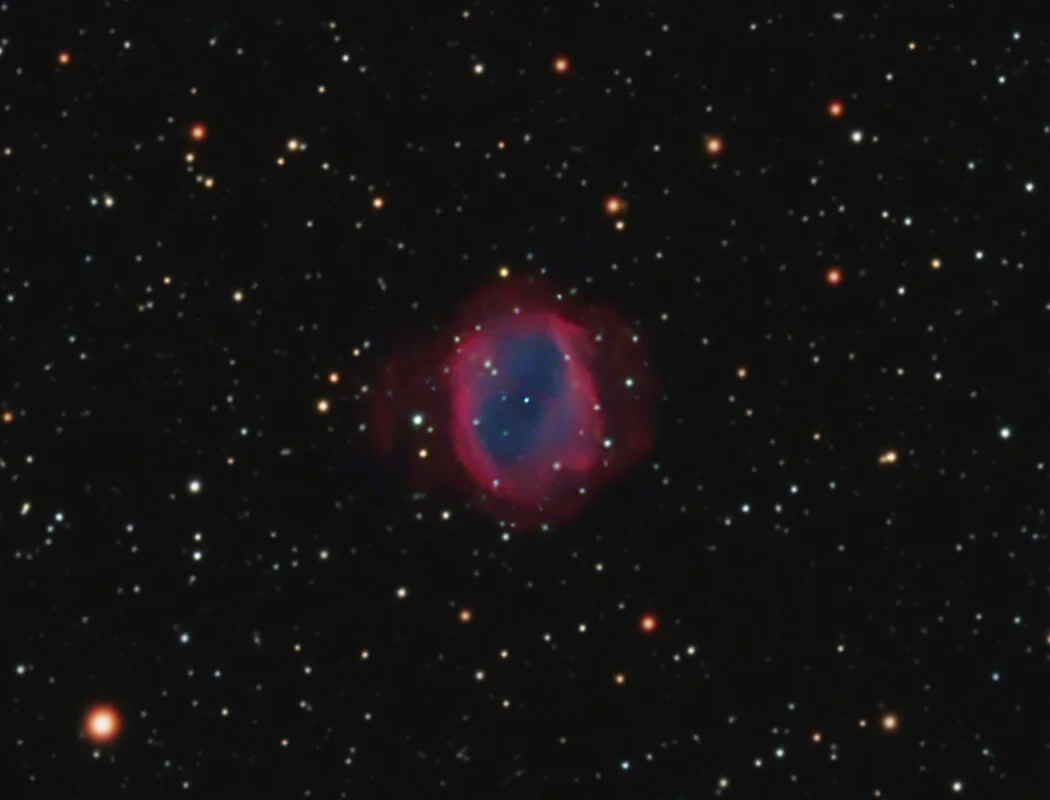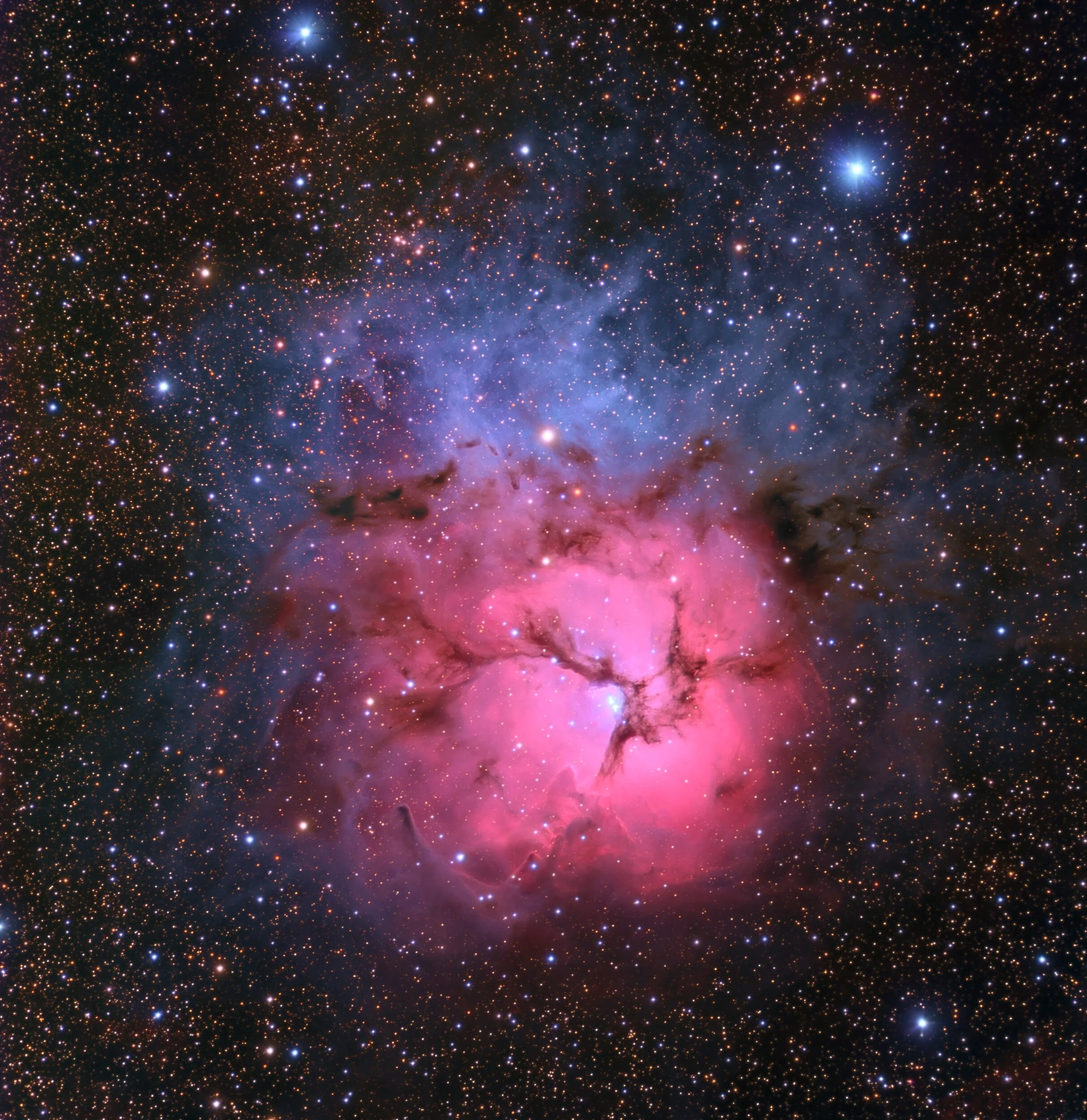
AAPOD2 Image Archives
The surroundings of the prawn nebula
IMAGE DESCRIPTION & DETAILS:
Takahashi FS60c
ASI1600MM Pro
7 Position FW, 36mm
Feather Touch Starlight
Pegasus Astro
EQ6
Astronomik Ha 6nm: 198 ∙ 420s (gain: 139.00) -10C bin 1x1
Astronomik S2 6nm: 137 ∙ 420s (gain: 139.00) -10C bin 1x1
Astronomik O3 6nm: 115 ∙ 420s (gain: 139.00) -10C bin 1x1
Total exposure: approx. 52.5 hours
Location:
Colombari's Terrace, Belo Horizonte, Minas Gerais, Brazil
FAST · PSCS5 · Pixinsight
April - May - June 2021
Copyright: Roberto Colombari
Pelican Nebula and surroundings
Image Description and Details :
Scopes used:
AP175 (DSW, New Mexico) H,S,O;
RCOS 14.5 (DSW, New Mexico) HSO
DreamScope 16 (ATOE, New Mexico) LHRGB
Total exposure (used): 52.7 hours
Image width: almost 1 degree
Tools: PixInsight, Topaz, Skylum, ACDSee, SWT
Copyright: Alex Woronow
M 81 and IFN
Image Description and Details :
Galaxy M 81, located in the Constellation Ursa Major at 12 million AL from the Milky Way. It is a spiral galaxy, relatively modest since its diameter is only 87000 light-years. It is in gravitational interaction with its neighbor M 82.
This picture was taken by Team ARO in South Portugal from 07/03/21 to 12/05/21 in Remote from France.
Equipment used: FSQ 106 on EQ6 Pro mount, ZWO Asi 1600MM camera.
Total exposure time: 25,74H
L=269x2
R=97x2
V=118x2'
B=100x2'
Ha=134x3'
Copyright: Team ARO
Ngc 6772
NGC 6772 is a small (81 arc seconds) 14th magnitude ancient bipolar planetary nebula in the constellation Aquila. It is approximately 4000 light years from Earth and was discovered by William Herschel on 21 July 1784. I was pleased to manage to capture the rarely-seen outer Ha shell.
Image captured on my remote dual rig at Fregenal de la Sierra in Spain between 21-30 June 2021.
Scopes: APM TMB LZOS 152 Refractors
Cameras: QSI6120wsg8
Mount: 10Micron GM2000 HPS
A total of 42 hours 15 minutes image capture (HaOIIILRGB)
Cooyright: Peter Goodhew
Markarian's Chain
Image Description and Details : SkyWatcher EQ 8 PRO Mount+TS Optics Photoline 80/480 f / 6 Triplet Super Apo - FPL-53+TS-Optics 2 "PHOTOLINE 0.79x Reducer / correctorZWO Optical ASI 1600-MM COOLED+ZWO EFWTelescope Guide: SkyWatcher EvoGuide 50ED+ZWO Optical ASI 290 MMFilters: Astronomik LRGB 1.25 "Type IIc
(Accumulation: 39h.)Locations: "Auriga" Private Observatory, Makeikha, Moscow Region, Russia
Copyright: Sviatoslav Lips
1 minute of Sun
Image Description and Details :
This is one of the most active days of the new solar cycle, weeks with clouds and I only had 5 minutes of sun, and of those minutes here it is in a single photo, one minute of its activity, impressive the details and the beauty that it gives us minute by minute the sun, each look through the telescope, is a new sun, we are going to continue enjoying this new solar cycle, and hopefully it will give us more landscapes like this, I hope you like it.
Mount Skywatcher azeq6.
Camera Zwo asi 178mm
Telescope Lunt 60MT/ B1200PT double stack
Capture Software Firecapture (60 second video recording, I chose 70% of the frames)
Dallas, Tx.
Copyright: Arturo Buenrostro
M20 - NGC 6514 - The Trifid Nebula
Image Description and Details :
This is my image of the wonderful and iconic Trifid Nebula. It is about 4100 ly away and is 42 ly across.My 0.54 degree x 0.54 degree field of view, beautifully accommodates it.Capture details:Dates; 2021-04-22 to 2021-05-18Lights: 24.5 hours integrationLum: 32 x 600 secsRed: 23 x 600 secsGreen: 22 x 600 secsBlue: 22 x 600 secsBias: 35Darks: 35Flats: 20 per colour channel per camera changeThere are some very bright foreground stars, which I decided not to reduce too much through Morphological Transformation, as compositionally I feel they add a lot to the image. My image scale and advantageous latitude, which means the object was at a good altitude throughout the imaging runs, plus generally decent seeing meant that good resolution of detail was possible. I was particularly pleased to resolve the stellar jet as imaged by the HST. This is a Herbog-Haro object numbered HH 399.
Copyright: Niall MacNeill
IC 1396
The object called IC 1396, also known as the Elephant Rüsselnebel, is located in the constellation Kepheus and consists of interstellar gas and dust.
The striking dark clouds of dust (globules) are areas where new stars arise. Due to high gravity, the gas is compressed further and further, so the cloud collapses. So-called protosters are emerging, which absorbs more and more gas and dust, until finally nuclear fusion begins and new stars are emerging.
The stars then make the surrounding gas shine.
A total of almost 14 hours of narrowband footage of hydrogen, sulfur and oxygen were taken and processed according to the Hubble color palette.
Hydrogen is green, oxygen is blue and sulphur is red.
This is how the different gases can be presented differently.
Here are some more dates:
- - Skywatcher Newton 200 / 1000
- - PROBABLY 1600 MM
- - Mount: Skywatcher EQ8-R
- - Filter: Ha, S2, O3
- - Guiding: MGEN 2 at Skywatcher Seeker
- - N.I.N.A., APP, Photoshop
- - 90 x 300 Sek (-15°C) - GAIN 139 (Ha)
- - 20 x 600 Sek (-15°C) - GAIN 139 (O3)
- - 35 x 300 Sek (-15°C) - GAIN 139 (S2)
- - Total exposure time: 14 hours
Copyright: Chris K. Fotografie
IC2948 - The Running Chicken Heart
Image Description and Details :
* Image acquisition by: Insight Observatory (Franck Jobard at Deep Sky Chile). * Image processing: Ruben Barbosa 12.5" f/9 Quasar Ritchey Chretien, SBIG STL11000, Losmandy Titan Frames: Ha: 80x600" (13h 20'), OIII: 73x600" (12h 10') This new image shows the Running Chicken Nebula, a cloud of gas and newborn stars that lies around 6500 light-years away from us in the constellation of Centaurus (The Centaur). Officially called IC 2944, or the Lambda Centauri Nebula, its strange nickname comes from the bird-like shape of its brightest region. The star Lambda Centauri itself lies just outside the field of view.
Copyright: Insight Observatory (Franck Jobard) and Ruben Barbosa
NGC 5078/5101
Image Description and Details :
Barred spiral NGC 5101 (top right) and nearly edge-on system NGC 5078 are separated on the sky by about 0.5 degrees or about the apparent width of a full moon. Found within the boundaries of the serpentine constellation Hydra, both are estimated to be around 90 million light-years away and similar in size to our own large Milky Way galaxy. In fact, if they both lie at the same distance their projected separation would be only 800,000 light-years or so. That's easily less than half the distance between the Milky Way and the Andromeda Galaxy. NGC 5078 is interacting with a smaller companion galaxy, cataloged as IC 879, seen just left of the larger galaxy's bright core. Even more distant background galaxies are scattered around the colorful field. Some are even visible right through the face-on disk of NGC 5101. But the prominent spiky stars are in the foreground, well within our own Milky Way.Location/Date – El Sauce, Chile, April 2021Imaging System – Planewave 17” CDK, 10 Micron GM3000, FLI ML16803 Chroma FiltersExposure – LRGB, 15.2 hoursProcessing – Pixinsight
Copyright: Casey Good/Greg Turgeon
NGC 6914 & Propeller Nebula
Image Description and Details :
A cropped & rotated rendition of my 1st attempt of this area. I made more effort to control the stars to better show the nebulosity. NGC 6914 & Propeller Nebula are perhaps the better known targets within the image.The Sadr Region (also known as IC 1318 or the Gamma Cygni Nebula) is the diffuse emission nebula surrounding Sadr (γ Cygni) at the centre of Cygnus's cross. The Sadr Region is one of the surrounding nebulous regions; others include the Butterfly Nebula and the Crescent Nebula (not shown in this image). It contains many dark nebulae in addition to emission diffuse nebulae.Imaging telescope: Takahashi FSQ130EDImaging cameras: FLI ML16200Mounts: Takahashi EM 400 Temma 2Guiding cameras: QHY CCD QHY 5 IIFocal Extender / Reducer: Tak QE 0.73x Software: PHD 2, Astro Pixel Processer, PixInsight , Sequence Generator Pro SGPFilters: Astrodon SII, Ha & OIIIAccessories: ATIK EFW3Original Resolution: 4473 x 3578Dates: Jun 10 - Jun 21, 2021Frames:Astrodon Ha: 36 x 600"Astrodon SII: 30 x 600"Astrodon OIII: 30 x 600"Integration: 16 Hours.
Copyright: Brendan Kinch











